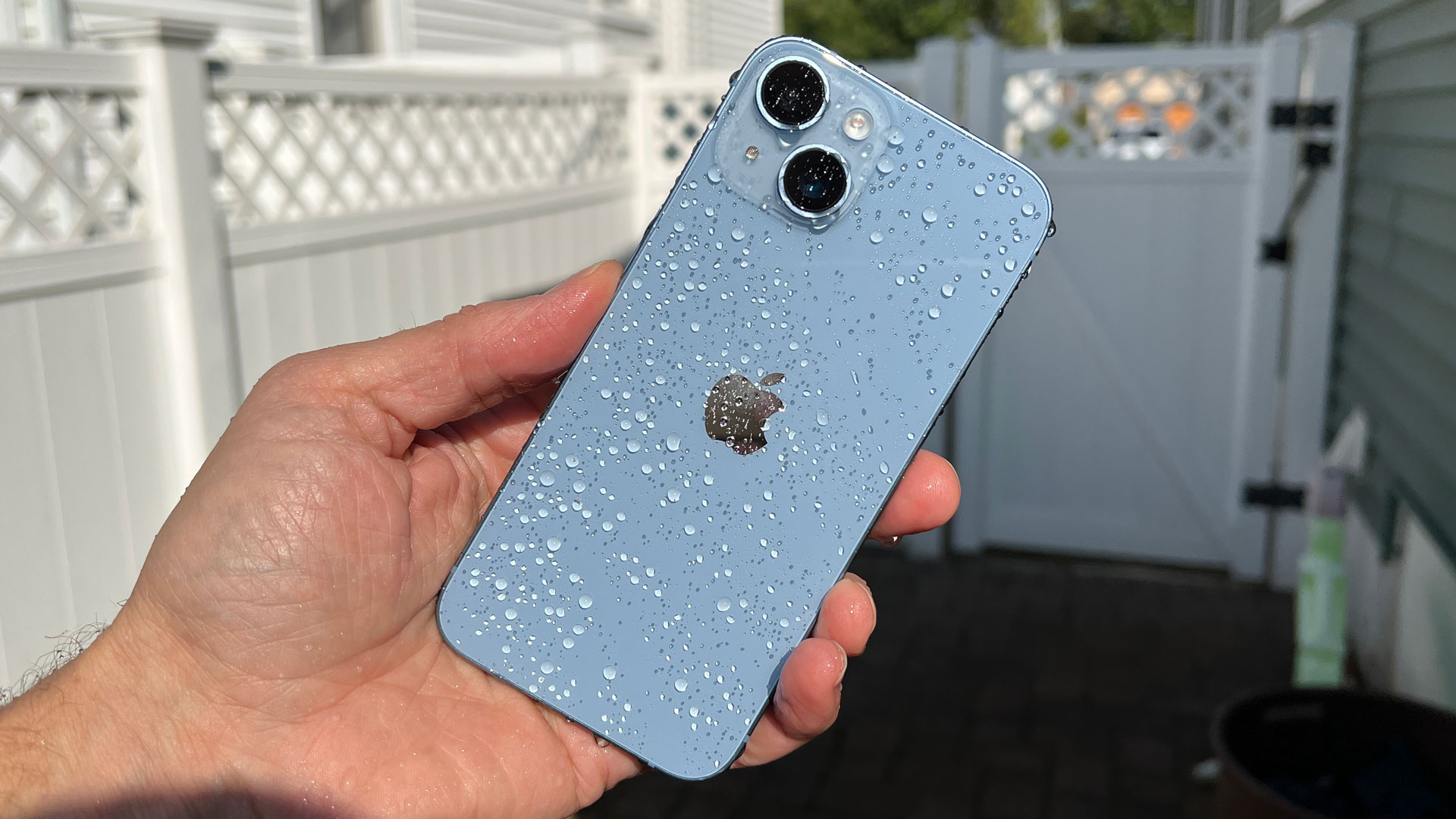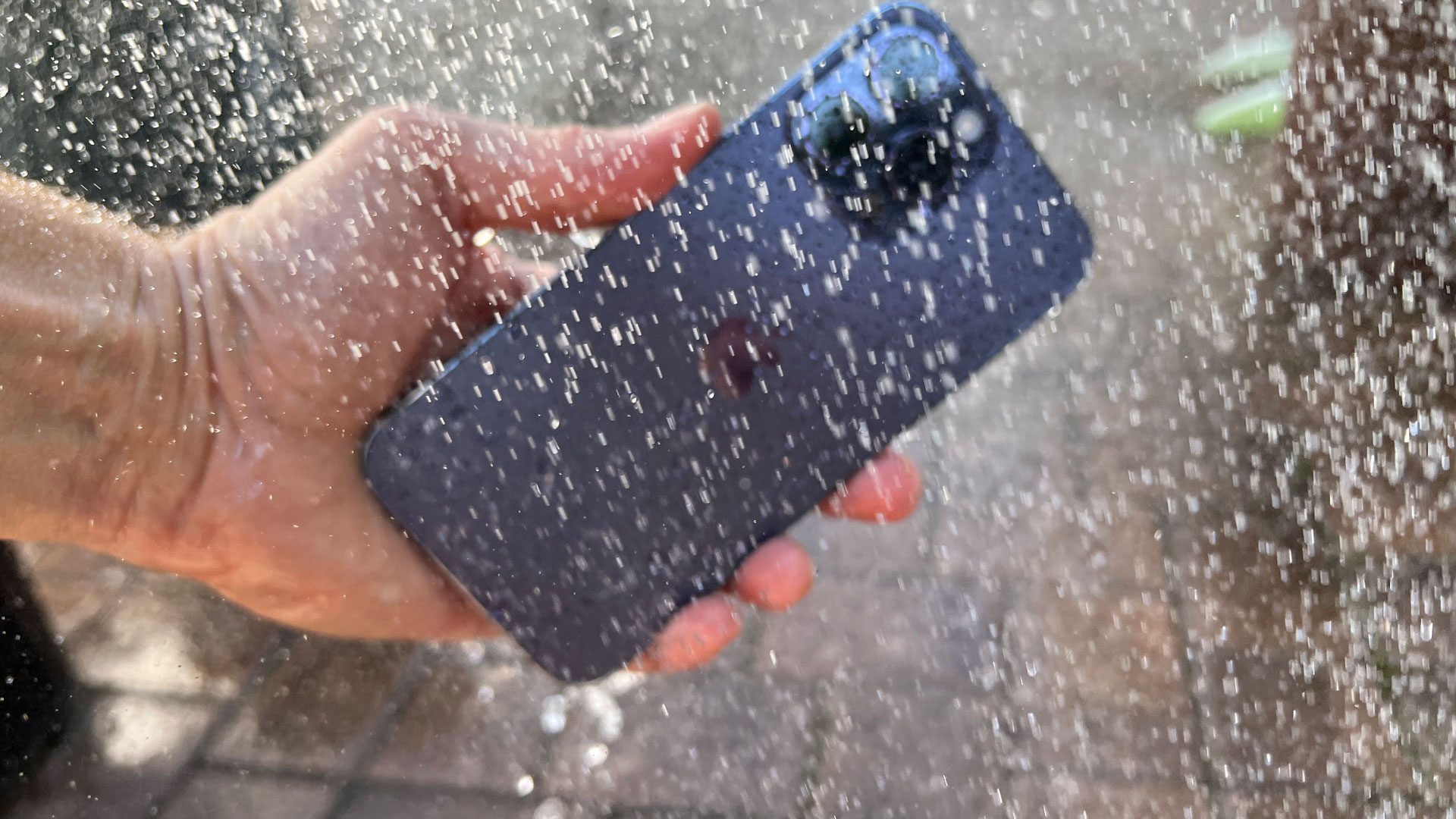Is the iPhone 14 waterproof?
Should you be avoiding splashes?

The iPhone 14 line – including the iPhone 14 Plus, iPhone 14 Pro, and iPhone 14 Pro Max – is finally here, and as you can expect from the most advanced iPhones ever, they have a price tag to match.
Whether you’re spending $799 / £849 / AU$1,399 on the base model, $1,099 / £1,199 / AU$1,899 on the Pro Max or anywhere in-between, it’d be fair to say it’s a significant investment – and one you’ll likely want to protect.
With that in mind, you may be wondering if the iPhone 14 series is waterproof, and to which specification. 'Waterproof' is a term is bandied about a lot in the consumer electronics space, when really what most manufacturers offer – including Apple – is water resistance, when it comes to devices like the iPhone 14 series.
So the iPhone 14 line is water resistant, rather than waterproof: read on to find out to what degree and specification they're designed to handle the wet stuff (and dust too).
iPhone 14's water resistance explained

The iPhone 14, iPhone 14 Plus, iPhone 14 Pro and iPhone 14 Pro Max are all IP68 certified under IEC standard 60529.
This means that they can be submerged in fresh water up to a maximum depth of six meters (19.7 feet) for up to half an hour. That certification also means that these phones are dust resistant, too.
This discussion has been contentious in recent years. The iPhone 7 was the first iPhone to offer anything close to water resistance, but in early 2022 a lawsuit against the company suggested Apple’s marketing claims had been “false and misleading” regarding the iPhone’s ability to stand up to water ingress.
The plaintiffs alleged that their phones had been damaged by “liquid contact” that should’ve been within the range of contact permitted by the aforementioned IP68 accreditation. The judge ruled that the plaintiffs were not able to demonstrate the damage was caused in such a way, though.
Sign up for breaking news, reviews, opinion, top tech deals, and more.
In 2020, an Italian court case did see Apple fined to the tune of $12 million for not stipulating that its water resistance tests were conducted in very specific scenarios, and not necessarily from things like dropping your phone in a lake while fishing, or a child grabbing it with wet hands.
It's such differences that reinforce the importance of distinguishing between water resistance and waterproofing on devices like iPhones.
Will Apple repair devices with signs of 'liquid contact'?
Apple’s warranty does not currently cover liquid damage, so if you are likely to be swimming deeper than six meters for more than half an hour, it’s best to keep your iPhone somewhere dry.
In fact the only way Apple will do anything with a liquid-damaged device is if a user has AppleCare+ protection.
This is an additional purchase available when you first buy your iPhone for around $10/£10 per month (or more for theft and loss protection).
We have a full AppleCare+ guide, but the key thing to note is that AppleCare+ coverage allows for two accidental damage repairs or replacements in a single year. Water (or any liquid) damage should feasibly fall under one of these, meaning you’re able to take the phone to a store and potentially source a new device for a standard cost.

Lloyd Coombes is a freelance tech and fitness writer for TechRadar. He's an expert in all things Apple as well as Computer and Gaming tech, with previous works published on TopTenReviews, Space.com, and Live Science. You'll find him regularly testing the latest MacBook or iPhone, but he spends most of his time writing about video games at Dexerto.